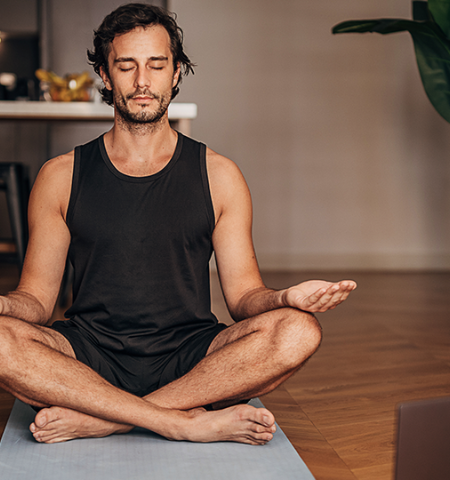Meditation offers a way to center yourself, reduce stress, and improve overall well-being. Integrating meditation into your daily routine can be transformative, offering numerous benefits for both mind and body. Here’s a comprehensive guide to seamlessly incorporating meditation into your daily life.
Start Small and Be Consistent
The journey to a consistent meditation practice begins with small steps. Start with just five minutes a day. Set a timer and find a quiet spot where you won’t be disturbed. Starting small reduces the pressure and makes it easier to commit. The comfortable you become with the practice, the more you can slowly increase the length of your sessions. Consistency is key; try to meditate at the same time every day to build a routine. Whether it’s first thing in the morning or right before bed, find a time that fits seamlessly into your schedule.
Choose Your Time Wisely
Identifying the best time of day for meditation is crucial. Many people find that meditating first thing in the morning sets a positive tone for the rest of the day. Morning meditation can help clear your mind, reduce stress, and prepare you for the challenges ahead. Others prefer meditating in the evening as a way to unwind and reflect on the day. Try different times to see what works best for you.
Create a Dedicated Space
Choosing a specific spot in your home for meditation can make your practice that much better. This doesn’t need to be an elaborate setup; a simple corner with a cushion or chair will suffice. Over time, this space will become a sanctuary for relaxation and mindfulness. Keep it clean and clutter-free, and consider adding elements that promote calmness, such as soft lighting, candles, or plants. Having a dedicated space signals to your mind that it’s time to shift focus and enter a state of meditation.
Use Guided Meditations
If you’re new to meditation, guided sessions can be incredibly helpful. Apps like Headspace, Calm, and Insight Timer offer a variety of guided meditations that cater to different needs and experience levels. These resources can provide structure and direction, making it easier to focus and relax. As you become more experienced, you may choose to meditate without guidance, relying on your breath or a mantra to center yourself.
Focus on Your Breath
Breath awareness is a fundamental aspect of meditation. Focus on the natural rhythm of your breathing. Inhale deeply through your nose, allowing your abdomen to expand, and exhale slowly through your mouth. This simple act of focusing on your breath can help anchor your mind and reduce distractions. If your mind begins to drift, slowly bring your focus back to your breath, and don’t judge yourself for letting your mind wander. This practice not only enhances your meditation but also cultivates mindfulness in everyday life.
Incorporate Movement
Meditation isn’t limited to sitting still. Practices like yoga or tai chi combine movement with mindfulness, offering a meditative experience through physical activity. These practices can be especially beneficial if you find it difficult to sit still for extended periods. The combination of movement and breath work helps to release physical tension and calm the mind, providing a holistic approach to meditation.
Make it a Habit
Creating a habit of daily meditation requires commitment and patience. To build this habit, try to meditate at the same time and place each day. Use reminders, such as phone alarms or sticky notes, to prompt you to meditate. Consistency is crucial for reaping the long-term benefits of meditation. After a while the whole thing will feel natural.
Be Patient with Yourself
Meditation is a practice that takes time to develop. Don’t be discouraged if you find it difficult at first. It’s common for beginners to feel restless or for their minds to wander. With regular practice, you’ll see improvements in your ability to focus and stay present. Remember that meditation is not about achieving a perfect state of calm but rather about observing your thoughts and feelings without attachment.
Connect with a Community
Many communities offer classes and group sessions, both in-person and online, where you can share your experiences and learn from others. Being part of a community can enhance your motivation and provide valuable insights into your practice. Additionally, group meditation can amplify the sense of peace and connectedness.
Reflect on Your Progress
Keep a journal to track your sessions and note any changes in your mood, stress levels, or overall well-being. Reflection helps to reinforce the benefits of meditation and can motivate you to continue your practice. Reviewing your progress over time can provide a sense of accomplishment and highlight the positive changes in your life.
Incorporating meditation into your daily routine can lead to profound benefits for your mental and emotional health. By starting small, choosing a consistent time, creating a dedicated space, and being patient with yourself, you can develop a sustainable meditation practice. With time and commitment, these moments of mindfulness will enrich your life, bringing peace, clarity, and a deeper connection to yourself.


